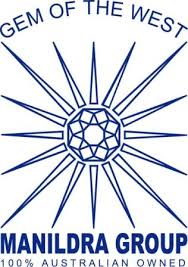Increasing UBKP Kappa for Wood Yield Optimisation
Michael Darveniza
Process Engineer – Fiberline & Causticising – Visy Tumut Mill
Email: This email address is being protected from spambots. You need JavaScript enabled to view it.
Keywords: digester, cooking process, wood yield, unbleached kraft pulp, process optimisation
Visy Tumut is an integrated mill that produces unbleached kraft linerboard paper. Unbleached kraft pulp (UBKP) is produced onsite by processing pinus radiata pine logs in a series of steps. Logs are debarked, chipped and screened in the woodyard, followed by the pre-steaming, chemical impregnation and cooking processes that take place, with a continous two-vessel hydraulic digester producing approximately 1525 Adt/d of pulp per day.
A major characteristic of UBKP is the ‘kappa number’, which is a measure of the amount of residual lignin remaining in pulp fibres after the cooking process. Lignin is the organic compound of cross linked phenolic polymers which provides structure and rigidity to wood cellulose and hemicellulose fibres, and constitutes a large part of the mass of raw wood chips. During the cooking process in the digester, a number of process conditions are carefully manipulated in order to control the amount of lignin remaining in the fibre – cooking time, temperature, chemical composition and strength. Visy Tumut has historically cooked pulp to a kappa number of between 88 – 92.
Kappa number is inherently linked to another critical pulp mill parameter – wood yield. The majority of the loss in raw material mass is accounted for by the dissolved lignin removed in the cooking process, which is concentrated and burnt to produce renewable energy and steam in the chemical recovery circuit.
During the summer in 2019/2020 catastrophic bushfires resulted in a significant amount of NSW pine plantation devasation, which prompted Visy to investigate a number of strategies for maintaining full production rate with limited wood supply. Short term, this involved salvaging fire-affected wood, however this fibre became less viable with time due to biological degradation. Long term, a strategy to sustain production with limited and increasingly expensive wood raw material was to investigate increasing the wood yield by increasing kappa number. This would offset part of the loss in fibre supply, by requiring less raw material for the same production rate.
The major objective of this work was to study the increasing of kappa number from 92 to 97, and to determine if it was viable with existing equipment. In particular, this section of the study aimed to quantify the impact to the pulp quality and properties when kappa was increased. Kappa number is not only a critical number in the digester cooking process, but affects virtually every other section of the integrated pulp mill in some way, such as by altering the amount of organic fuel sent to the recovery boilers in the form of lignin and black liquor, or affecting the pulp colour control on the paper machines.
A large-scale 2-day trial was undertaken to control kappa number to 97. During the trial, extensive work was undertaken to observe the process through online monitoring, particularly the effect on pulp refining and washing. Frequent communication was sent on the progress of the trial to key stakeholders. A large amount of pulp samples were taken at several key refining sample points in order to conduct further laboratory testing and analysis.
Throughout the investigation into increasing kappa, a number of interesting findings were made in the Visy Tumut process. No equipment was identified to be overloaded or exceeding capacity. As hypothesised, a higher amount of energy was required in the pulp mill refiners to maintain shives and freeness to an acceptable level. Pulp mill washing efficiency was suprisingly unaffected throughout the duration of the trial. Whilst an apparent reduction in the quantity of chips fed to the digester was noted, at constant pulp production, the affect on black liquor inventories was not able to be clearly discerned, and would require a longer trial to quantify.
The initial trial work and investigation conducted, proved promising for the digester and fibreline section, based on what was observed, however a longer 3-5 day trial is required to investigate the effects on other sections of the mill, including the final product quality.

Michael has been working in the pulp and paper industry for 3 years, first starting as a graduate chemical engineer at their recycled paper mill in Coolaroo. For the graduate program rotations, he then moved to the Visy Tumut Kraft Paper mill, where he stayed on in a full time role.
His primary areas of focus have been in the digester and fibreline, as well as the recausticising and lime kilns, where he is responsible for area tracking and reporting, small to medium sized improvement projects and day-to-day problem solving.



































